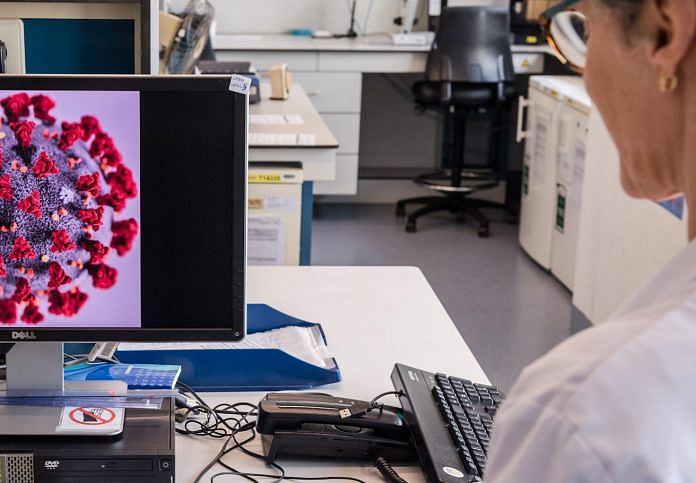Bloomberg: The novel coronavirus can spread through the air to people who are more than 6 feet away from an infectious person, the U.S. Centers for Disease Control and Prevention said on Monday, in guidance that could raise new challenges for safely re-opening businesses and schools.
In an update to its website, the CDC said the coronavirus can sometimes be spread through small particles that can linger in the air and infect people separated by distances previously considered safe. Many social-distancing guidelines adopted by workplaces, restaurants and stores advise people to stand at least 6 feet (1.8 meters) apart to avoid transmitting the pathogen that causes Covid-19.
“Today’s update acknowledges the existence of some published reports showing limited, uncommon circumstances where people with Covid-19 infected others who were more than 6 feet away or shortly after the Covid-19-positive person left an area,” the agency said in a news release.
The change follows months of mounting scientific evidence that Sars-CoV-2 can be transmitted through the air at greater distances than understood in earlier stages of the pandemic. There have been indications the CDC was moving toward updating its guidance. Last month, it posted and then removed a guideline on airborne transmission, later describing it as a draft posted in error.
The new guidance arrives as the pandemic appears to be shifting into a more intense phase in the U.S. In 34 states, the seven-day average of new cases is higher than it was a month ago, and an outbreak of the virus at the White House appears to be widening. At the same time, schools are reopening, states such as Florida have lifted restrictions on restaurants and other businesses, and the approach of cooler weather and holidays is expected to push more people indoors to socialize.
Ventilation issues
A recent archived version of the CDC’s web page made no mention of airborne transmission, emphasizing that the main way the virus spreads is through close contact among people who are within six feet of each other, through respiratory droplets emitted by coughing, sneezing, and speaking. It acknowledged that the virus may spread in other ways, including on contaminated surfaces.
The CDC’s updated site includes a section acknowledging that virus particles also sometimes spread through the air, particularly in enclosed spaces with poor ventilation. Scientists believe that in these cases, airborne virus particles emitted “became concentrated enough to spread the virus to other people,” including sometimes shortly after the infectious person left.
The transmissions sometimes occurred when the infected person was breathing heavily, while singing or exercising, the agency said.
Linsey Marr, an expert on the airborne transmission of viruses at Virginia Tech, in a tweet called the update “an accurate, sorely-needed update acknowledging airborne spread and importance of masks at all times around others and of ventilation.”
In an open letter in July, 239 scientists urged the World Health Organization to recognize the potential for airborne spread. One study of a meat plant suggested that under certain conditions the virus can travel 26 feet.
Also read: Prioritise breaks for health staff as ‘we move into next phase of pandemic’, UK journal says
Recommendations unchanged
In a Senate hearing last month, CDC Director Robert Redfield acknowledged there was evidence of airborne spread, but said the CDC document that was removed hadn’t been cleared for publication by agency staff.
“I just want to stress for the American public and for everyone here that that document that went up was a draft, had not been technically reviewed by CDC,” Redfield said on Sept. 23. He said the agency reverted to the one that had been reviewed.
The CDC Monday reiterated that it’s more common for the virus to spread through close contact with an infected person. The update doesn’t change the CDC’s recommendations for how to protect against infection by wearing masks, staying 6 feet apart, washing hands, cleaning surfaces, and staying home when sick.
“CDC’s recommendations remain the same based on existing science and after a thorough technical review of the guidance,” the agency said in news release sent to reporters Monday.
It’s unusual for the CDC to alert the media to changes in its guidelines, with updates frequently published to the agency’s website with little fanfare.
The agency didn’t immediately respond to an emailed question about whether the acknowledgment would lead to changes in guidance for restaurants, businesses, and other settings.-Bloomberg
Also read: WHO says 10% of world’s population likely affected by Covid-19, warns of difficulties ahead



